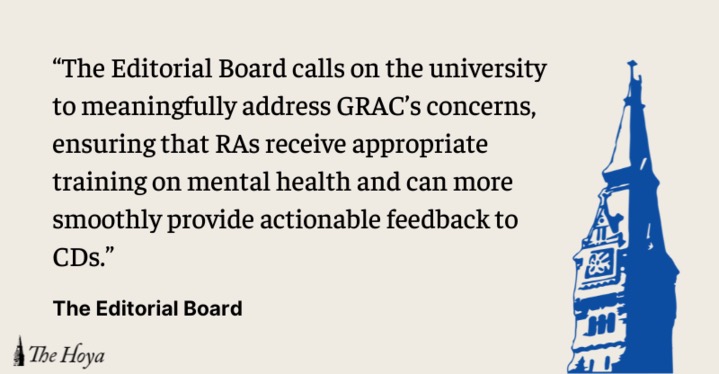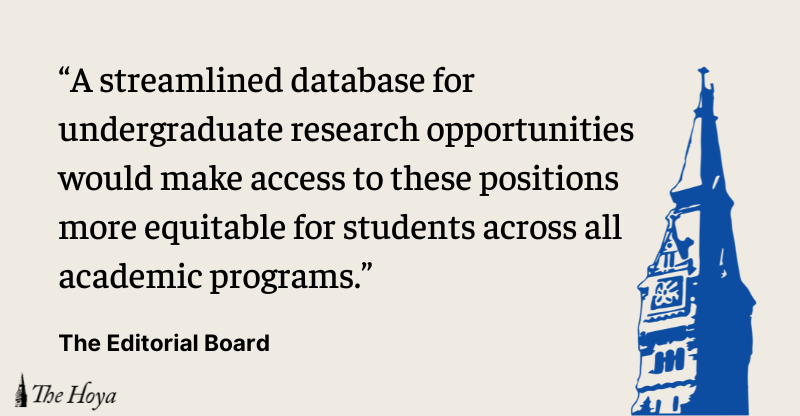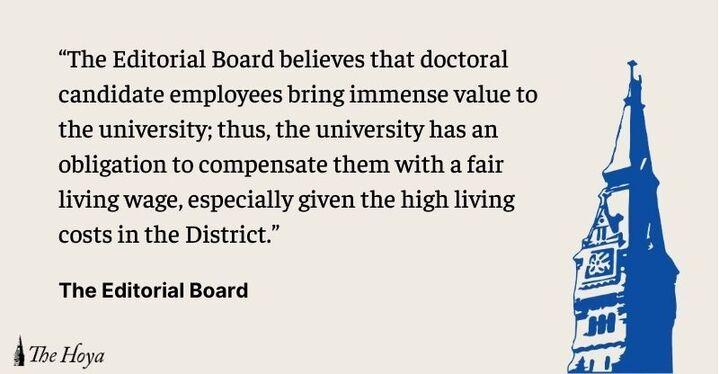Mold has invaded hundreds of dorms already this year, posing serious health risks to students. After years of half-measures and incomplete solutions, Georgetown University must treat this problem as the severe hazard it is.
This semester, Georgetown students have seen their health worsened by mold in their dormitories, and the nearby University of Maryland relocated over 500 students to hotels because of the potential health consequences of a mold outbreak in a freshman dormitory (“Students Raise Concern Over Mold in Dorms,” The Hoya, Oct. 19, 2018, A1).
Despite clear indicators of risk to student health, Georgetown continues to treat mold as an annoyance and not a serious hazard.
Georgetown’s existing procedures for addressing mold in student housing fall severely short. The proliferation of mold on campus demands the university conduct deep cleanings in buildings with a continued history of reported mold and explore ways to make campus buildings less conducive to mold buildup.
Increased rainfall over the summer led to a dramatic uptick in reports of mold on campus: The Office of Planning and Facilities Management responded to 361 mold-related work requests between August and October 2018, up from 147 requests over that timespan during the previous year.
However, blaming Georgetown’s mold problems primarily on this season’s weather — as a university spokesperson did in a Nov. 29 email to The Hoya — ignores the university’s recent history of mold on campus.
On Oct. 18, Sarah Mendelsohn (COL ’21) received a diagnosis of cough variant asthma, which is exacerbated by mold, according to the National Institutes of Health. (Full disclosure: Mendelsohn is a news desk editor at The Hoya.)
Georgetown’s 2014 refusal to reach an agreement with a university employee over worsened health conditions led to the employee’s termination the following year. Two years later, the employee filed a lawsuit against Georgetown, claiming her medical issues were aggravated by mold in her university workplace (“Former Employee’s Lawsuit Reveals Mold Hazards,” The Hoya, Feb. 7, 2018, A1).
As far back as 2010, The Hoya’s editorial board noted “mold infestation” as one of the “many maintenance issues that always arise at the beginning of each year.”
Evidently, this year’s weather is not solely responsible for Georgetown’s ills. If the university is truly interested in resolving a health crisis on campus, it must first recognize the urgent health risks mold presents. Georgetown’s efforts to combat campus mold so far fail to meet this standard.
Previous reporting in The Hoya documented multiple cases in which facilities took several days to respond to cases. Mendelsohn, for example, called facilities six times without receiving a response.
Facilities’ practices are clearly inadequate in addressing students’ health concerns. However, even proper execution of current practices would fail to achieve the mold eradication Georgetown’s campus desperately needs.
Georgetown seems to recognize the problem — at least in part. Greg Simmons, interim vice president for planning and facilities management, outlined the university’s plan to more thoroughly examine buildings that have seen increases in mold-related requests in coordination with a hygienist from environmental consulting firm Eastern Research Group.
“This work will include inspections, testing of air quality, and a review of building systems” over winter break, Simmons wrote in an email to The Hoya. He also noted a pilot program for the break in which all bathrooms on campus “will be thoroughly cleaned.”
These efforts are a good start — but not enough to keep Georgetown students healthy in the long term.
The university should prioritize long-term mold eradication in residential buildings, likely over the course of several months during the summer. This deep cleaning would include conditioning carpets, redoing drywall where necessary, and replacing furniture and carpets if necessary. While a project of this magnitude would carry logistical consequences, doing the work during the summer would carry minimal complications for students.
For a decade, Georgetown has functionally ignored the deeply rooted mold problem on campus. To protect its students’ health, the university must take serious and consequential action.
The Hoya’s editorial board is composed of six students and is chaired by the Opinion Editor. Editorials reflect only the beliefs of a majority of the board and are not representative of The Hoya or any individual member of the board.







